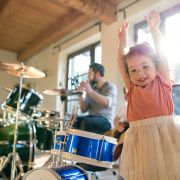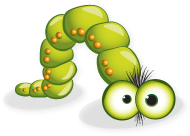The Value of Music and Dance in Early Education: A Quick Guide
Kids are bundles of energy, constantly exploring and learning through their environment. Among the countless ways to support their development, music and dance stand out as powerful tools. These activities are not just forms of expression; they are also essential for enhancing cognitive skills, fostering social connections, and improving physical well-being.
Music and dance engage children in a way that few other activities can, stimulating parts of the brain responsible for memory, coordination, and emotional expression. The rhythm and melody found in music, combined with the movement of dance, help children develop key skills while having fun. As they follow a beat or move to a tune, they also learn to express feelings and build confidence in themselves and their abilities.
Introducing music and dance into a child’s daily routine can open up a world of learning. From improving memory and concentration to encouraging teamwork and self-expression, these activities provide numerous benefits. Let’s explore how music and dance contribute to the holistic development of young children, enriching their early learning experience in a joyful and meaningful way.
Enhancing Cognitive Development
Music and dance are more than just enjoyable activities; they are powerful ways to boost brain activity in young children. When kids engage in these activities, they activate different parts of their brains. Listening to music can improve their ability to focus and understand patterns. Dancing engages their minds in planning movements and understanding space, enhancing their overall cognitive abilities.
The rhythm and movement involved in music and dance are key to improving memory and concentration. When children learn to keep a beat or remember dance steps, they practice skills like sequencing and pattern recognition. These skills are important for tasks like reading, maths, and problem-solving.
Engaging in music and dance also encourages the use of both sides of the brain. Creative activities stimulate the right hemisphere responsible for emotions and creativity, while structured tasks, like learning a song or dance routine, engage the left hemisphere, which handles logic and order. This dual engagement not only enhances memory but also pushes children to concentrate better. By making music and dance a regular part of learning, children develop cognitive skills that underpin much of their future educational success.
Social and Emotional Growth Through Music and Dance
Group musical activities and dance sessions offer children valuable opportunities to develop social skills. Participating in these collective events helps children learn to share, cooperate, and communicate effectively. Working together in a group setting promotes skills like taking turns, listening, and following directions, which are essential for successful social interactions.
Music and dance also provide a fantastic outlet for expressing emotions. Children learn to channel feelings through lyrics, melodies, and movements, which can be therapeutic. For shy kids, performing in a dance or playing an instrument in a group can build confidence, helping them express themselves more openly.
Moreover, these activities create a sense of achievement when children master a new song or dance routine. This accomplishment boosts self-esteem and encourages them to take on new challenges. Engaging in music and dance also introduces kids to different cultures, fostering a sense of understanding and appreciation for diversity. By participating in these expressive activities, children not only grow socially and emotionally but also build important life skills that encourage resilience and empathy.
Physical Benefits of Dance and Movement
Dance and movement are excellent for enhancing physical development in children. These activities improve motor skills, which include actions like balancing, jumping, and coordinating movements. When children engage in dance, they learn to move their bodies in new and complex ways. This enhances their gross motor skills, which are essential for everyday activities such as running, hopping, and climbing.
Dance routines require children to practice control and precision. As they learn different moves, they improve their sense of balance and flexibility. This physical activity not only strengthens muscles but also improves cardiovascular health, contributing to a healthier lifestyle overall.
Moreover, regular physical activity through dance supports the maintenance of a healthy weight in children, reducing the risk of obesity. It also enhances endurance and energy levels. Encouraging children to dance and move helps instil a love for physical activity, promoting a lifetime of health and fitness. Through dance, children embrace the joy of movement, making exercise a fun and engaging part of their daily routine.
Integrating Music and Dance in Early Learning Settings
Incorporating music and dance into daily routines at early learning centres can significantly enrich the educational experience. One effective strategy is to start and end the day with music. Singing welcome songs in the morning and goodbye songs in the evening creates a structured and joyful environment for children.
To keep things interactive, consider including dance breaks between activities. These short bursts of movement help children release energy and refocus, making learning sessions more effective. Educators can also introduce themed music sessions where children explore different styles of music or learn dances from various cultures. This not only broadens their understanding but also fosters cultural appreciation.
Encouraging creativity is key, so allow children to create their own dances or play instruments during free time. Parents can also bring music and dance into their home routines by playing favourite songs or having family dance sessions.
Combining these activities with storytelling can make lessons more engaging. By integrating music and dance creatively, educators and parents can nurture a rich, dynamic learning environment that supports all areas of development.
Conclusion
Music and dance are powerful allies in a child’s development. They stimulate the mind, nurture the soul, and energise the body, creating a balanced developmental platform. These activities encourage children to explore and express themselves, building a strong foundation for lifelong learning and well-being. Embracing these practices in learning settings supports holistic growth, offering kids the tools they need to thrive in various facets of life.
At Eskay Kids, we understand the profound impact music and dance can have on early childhood development. Our play-based approach integrates these elements, enriching every learning experience with creativity and joy. If you’re interested in how Eskay Kids can help your child grow through playful exploration of music and dance, visit our website to learn more or schedule a tour at our Springfield daycare centre to see our vibrant spaces in action.




